What kind of zebrin is and how to grow it?
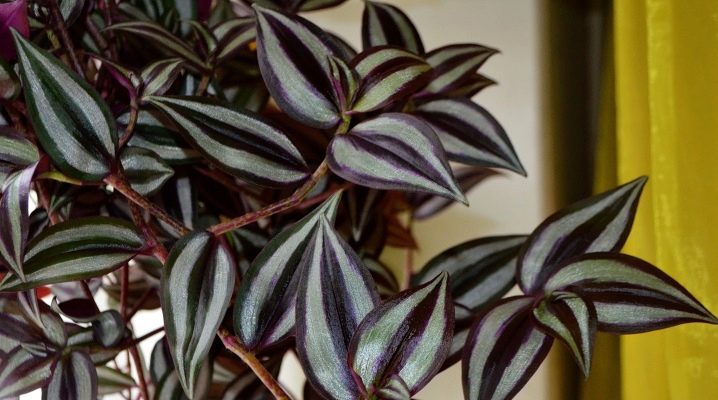
Zebrina is a perennial belonging to the Kommelinov family. The plant is in demand among florists, attracts attention with its simplicity of cultivation and unpretentious care. It is worth taking a closer look at the available types of zebrins, as well as the methods of planting and reproducing them.

Description
Zebrina is a decorative herbaceous flower that can take root in almost any conditions. Many growers note that the plant belongs to Tradescantia, however, there are many rather noticeable differences between the two species.
-
The presence of stripes on the sheet plates, the shape of which is also different. Zebrins have oval leaves, slightly pointed towards the end, and the top side gives off a pleasant gloss. The color of the leaves of the plant is close to green-silver.
-
Erect stems. The main characteristic of the flower, as over time, the stems begin to gradually descend.
-
Shallow root system. The plant is not very keen to develop roots, forming only small shoots.

And also among the differences and peculiarities of the species - non-standard colors, for which the zebrina got its name. Among the special properties of the plant, medicinal ones are distinguished, and earlier the plant was actively used to treat various diseases.

Interestingly, with the help of modern technology, a number of antibacterial components have been discovered that can lead to a decrease in blood sugar levels. The result was the possibility of using zebrin for medicinal purposes - the plant actively fights microbes and destroys viruses.
If you study folk sayings about a striped flower, then many note the extrasensory features of the plant. For example, the flower is said to react strongly in areas with positive or negative energy, changing its appearance during flowering.
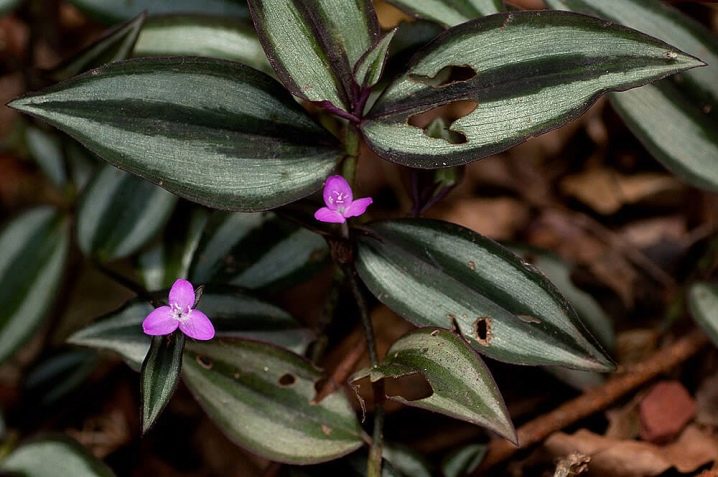
Views
There are several varieties of the popular houseplant. It is worth considering each in more detail.
Hanging
One of the most common types of zebrins, the difference is strong, but hanging shoots. Additional characteristics:
-
leaf plates are dense, oblong, covered with light stripes;
-
stems are powerful;
-
the root system is underdeveloped.
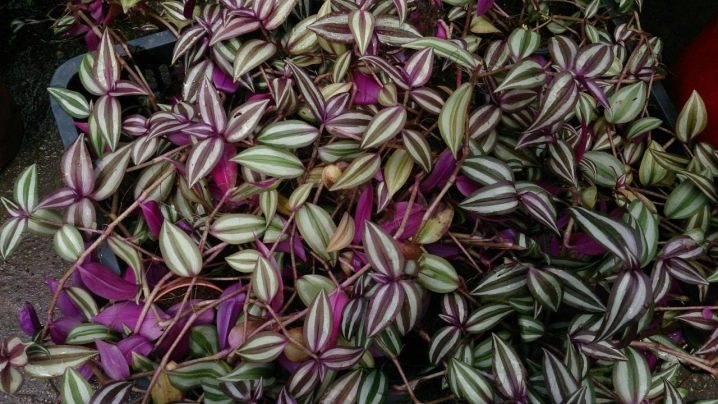
An interesting feature lies in the fact that the upper part of the leaves of the plant is dark green, and the lower one has a reddish-purple tint.
Purple
The peculiarity of the purple culture is in bright purple leaves that attract the attention of flower growers and interior designers. The variety also has stripes on the leaf plates, but they are noticeably thinner in comparison with other species and have less contrast.
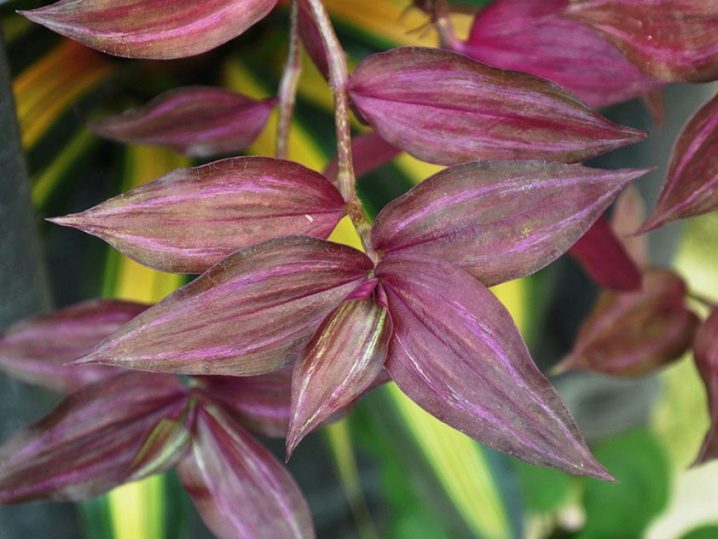
Flocculosis
A special variety, the main characteristic of which lies in the color of the leaf plates. They are white, and on the surface of each leaf there is a small pile, pleasant to the touch. The culture is often grown at home due to its stability and unpretentiousness.
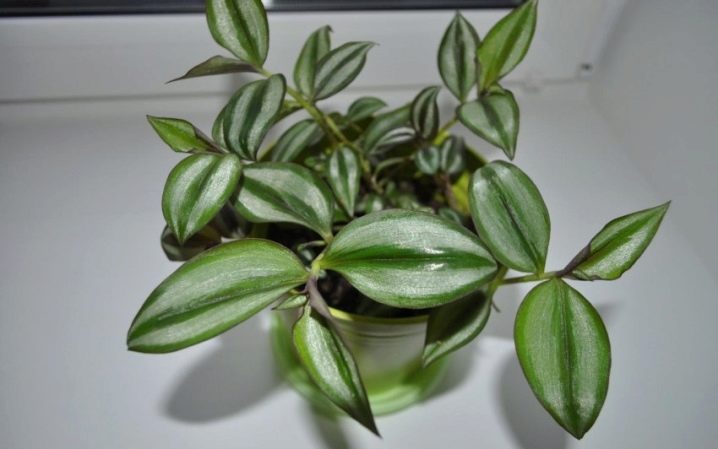
Landing
Planting a zebrin is best done in the spring season, when new leaves have not yet formed. To carry out the necessary work, you will need a special container (pot), as well as soil mixture prepared yourself or purchased at a gardening store.
Recommendations:
-
when choosing a container, preference should be given to pots made of ceramics or plastic, the height of the structure should not be less than 10 cm;
-
drainage holes must be provided in the pot;
-
before planting, it is necessary to pour fine expanded clay or brick chips on the bottom of the container.
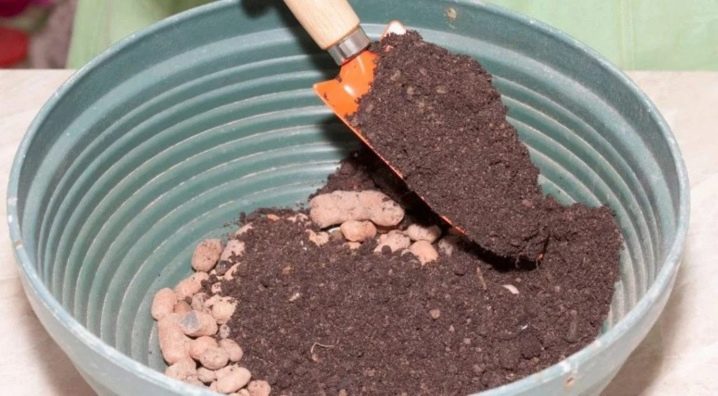
Planting a zebrina will not cause any difficulties, even a novice florist can handle the procedure.
Main steps:
-
first, the plant is prepared by spraying the elements with disinfecting and growth-stimulating compounds;
-
then fill the pot with a drainage layer and soil mixture, leaving a groove for the flower;
-
the zebrina, along with its small root system, is carefully transplanted into a pot;
-
cover the remaining space with earth;
-
thoroughly ram the soil;
-
watered, covered with transparent material, if the plant is small, and put in a sunny place.
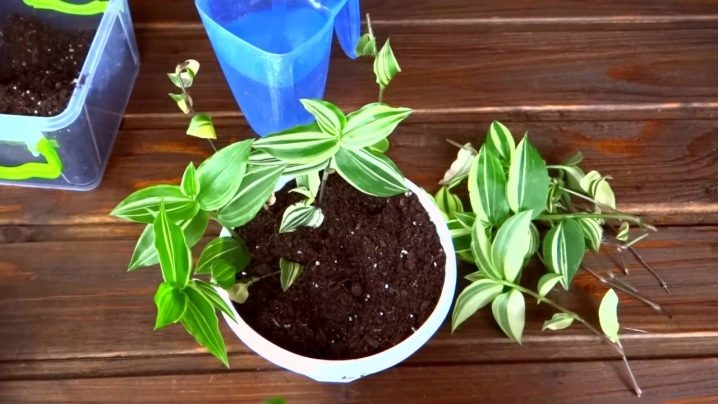
When growing crops, transplants may be required. Usually, the procedure is carried out in order to change the soil composition, as well as for the comfortable growth of the flower, changing the size of the pots.
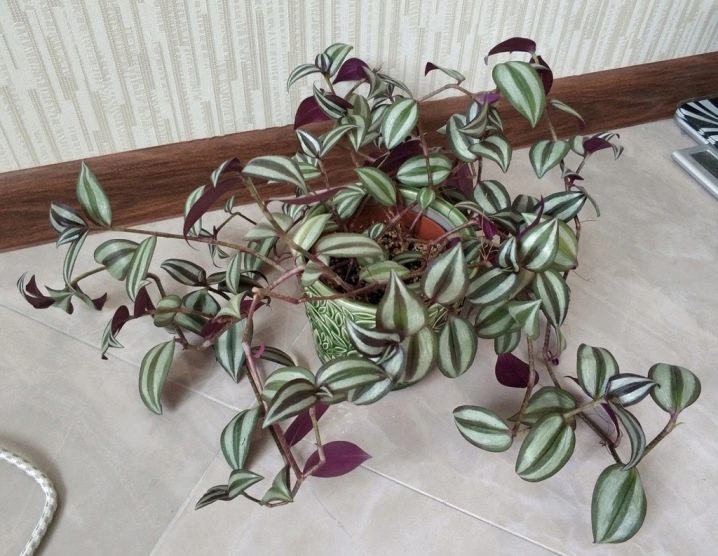
Before replanting, it is recommended to water the flower abundantly so that the extraction of the roots does not cause additional problems.
Care
Tradescantia variegated, as the zebrina is also called, prefers to grow in sunny places. Usually containers with a flower are placed where scattered rays penetrate, since straight lines can cause a plant burn. The best solution would be to place the culture in the western or southwestern part of an apartment or a country house.
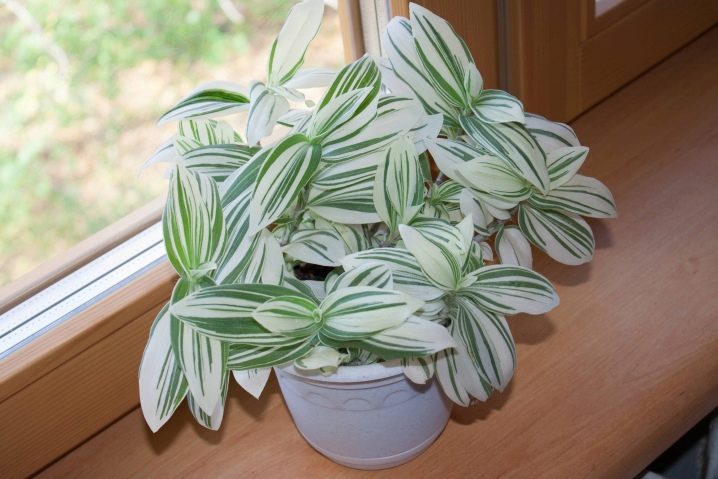
In order for the zebrina to start active growth and not get sick, you need to take proper care of it. Here are the highlights.
-
The soil. Preference should be given to light and loose soils, in which the flower will quickly take root and begin to develop. You can fill the pots with commercial substrates that are suitable for decorative leafy plants, or with your own mixtures. The latter option involves the use of sand, peat and perlite in a ratio of 1: 2: 1, respectively. It is important to ensure that the plant receives light for at least 10 hours. In this case, the lighting should be diffused, and in the winter period it will be necessary to provide artificial light. It is possible to determine that the plant needs additional lighting by the foliage beginning to fade: the stripes gradually merge with the main color of the leaves, and the flower loses its attractiveness.
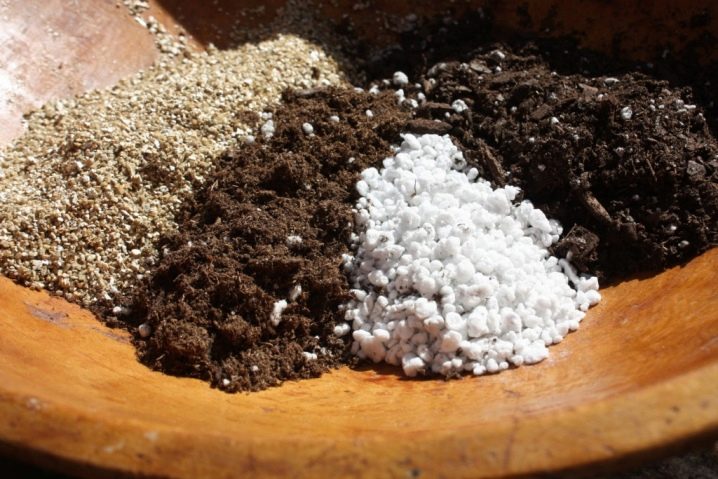
- Temperature. The optimum temperature for a zebrin is 21-25 degrees Celsius. In winter, the temperature can be cooler, the main thing is to avoid drafts. As for humidity, the plant prefers moderate - up to 65-70%.

- Watering. The plant is quite demanding for watering, therefore it is recommended to apply the liquid regularly to ensure active growth of the culture. In spring and summer, the flower is moistened 1 time in 3-4 days, in winter the interval is increased to a week. When watering, it is important to focus on the topsoil. If the soil is dry, it is worth dampening the plant. In addition, flower growers recommend to loosen the soil after each watering to ensure an active flow of oxygen to the roots.

- Pruning. Formation of the crown of the creeping plant is not required, but preventive and sanitary haircuts are necessary. It is recommended to remove dried, deformed or damaged stems and leaves every season to prevent the death of the flower. Pruning is carried out using sharp sterile instruments.
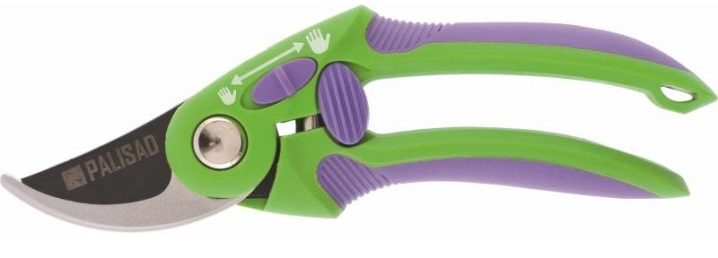
Zebrina also needs regular feeding. The soil should be fertilized with organic matter, making the necessary compositions in spring and summer.
Reproduction methods
Zebrina, unfortunately, does not live long compared to other perennial plants, and this is its only drawback. The flower loses its attractiveness after 2-3 years, so there is a need for culture propagation. There are several options with which it will be possible to propagate a zebrin. The most popular ones are worth considering.
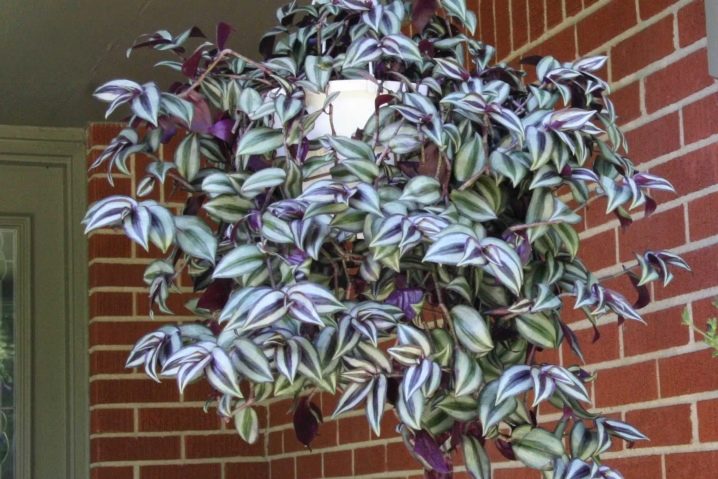
Cuttings
The most common and easiest way to implement. The diagram looks like this.
-
First, it is determined which elements of the mother plant will be cut. Preference should be given to strong and healthy shoots, which will quickly take root in a new place and start active growth. The optimal length of one cutting should be 12 cm. When the required material is selected, it is cut in the spring.
-
After the trimmed cuttings are placed in a container of water to root. It can be a clear vase or a regular container. Disinfecting and growth-stimulating compounds are also added inside the container.
-
When the seedlings take root, they will be transplanted into a fertile substrate in which to grow adult crops. Usually, the transplant is performed in plastic or special seedling boxes. The maximum planting depth of cuttings should be 4 cm, while it is important to observe the slope. At the end, the seedlings should be covered with transparent film or glass to achieve a greenhouse effect.
-
The homemade greenhouse is regularly ventilated and the plantings are irrigated. This happens until the cuttings put out new leaves. In this case, the shelter can be removed, and the ready-made sprouts can be transplanted into separate containers.
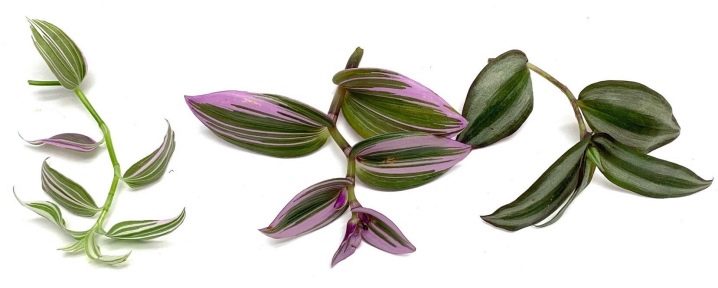
Cutting is not difficult, and the procedure will not take much time. The first two stages can be completed in a day, just like the remaining two.
Dividing the bush
This technique is used mainly for transplanting or rejuvenating old plants. The bush is moistened abundantly using warm and settled water, waiting for the soil to completely soak. When the desired result is achieved, the flower, along with the roots, is carefully removed and transferred to a basin of water.
Other actions:
-
after washing off the rest of the soil, the root system is pulled out of the water to allow it to dry;
-
remove dubious shoots and roots;
-
divide the plant into several parts, where each has its own shoot and a small number of root processes;
-
planted in separate containers.
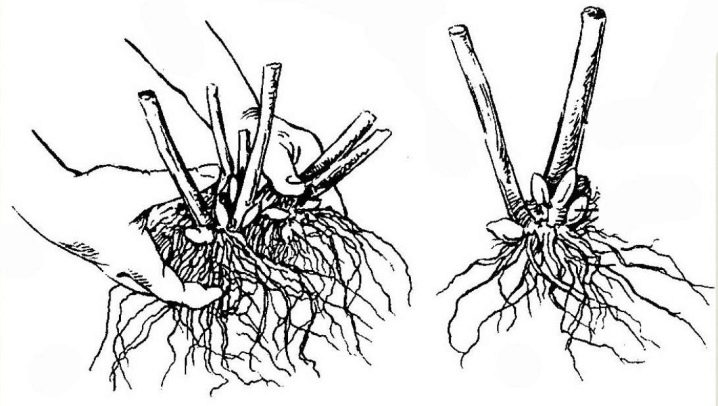
After the delenki, they are placed in a warm and sunny place in order to transplant again over time.
Seeds
The third most popular method, the minus of which is a small chance of success. In addition, many growers find this option quite time consuming and stressful. The second disadvantage of zebrins is that the seeds are too small, which can only be planted in a container or box with sealed lids. Stages:
-
first, the seeds are spread on the surface of the soil;
-
then the soil mixture is evenly covered with a layer of peat and sand;
-
then cover the future seedling with a transparent material in the form of gauze, glass or cloth.

The first shoots appear on average in a month, if you start preparing somewhere in April or May.
Diseases and pests
The process of growing a crop is accompanied by a collision with various diseases and pests. Therefore, it is worth considering the most common types of problems.
-
Spider mite. Its presence can be determined by a thin whitish cobweb on the underside of the leaves. To prevent active reproduction of insects, it is worth using acaricides, for example, "Aktara" or "Actellik". Usually, mites appear when the humidity is too high, so you should additionally take care of adjusting the microclimate.
-
Shield. It is a small insect that is one of the most dangerous pests for a flower. You can cope with the shield with a cotton swab and laundry soap, with which you will need to treat the surface where insects are found.
-
Mealybug. A clear sign of the appearance of an insect is the drooping of the stems and the wilting of flowers. Thorough flushing of the roots and soil residues will help to cope with the problem.
-
Root rot. A common fungus that forms in high humidity conditions, while the plant begins to dry and turn yellow. Therefore, to prevent the development of the disease, it is recommended to remove the flower from the previous container.
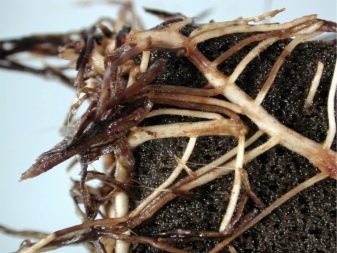
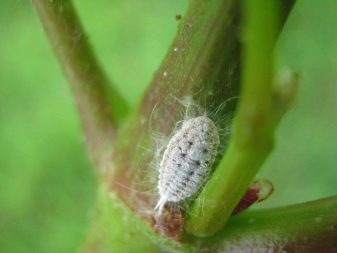

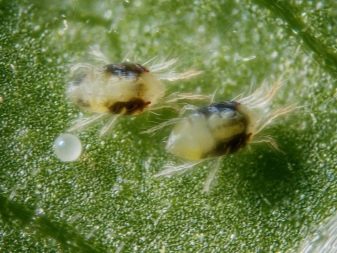
Having health problems or weak immunity is a high risk of plant death. Typical symptoms of a deterioration in the condition of a flower:
-
yellowing of the leaves followed by their fall;
-
twisting of sheet plates due to too dry air;
-
gradual wilting of stems and leaves;
-
the color of the stripes merges with the main color of the plate;
-
bare stems prevent new leaves from developing.
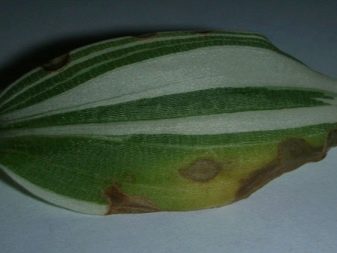
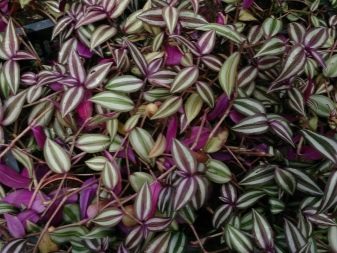
If dark or red spots appear on the leaves, this is the first sign of worsening climatic conditions.
Application in flower arrangements
Zebrina is often used for decorative purposes. Designers use it to create unique compositions with other colors. The most interesting is the combination of zebrin with most of the different subspecies.
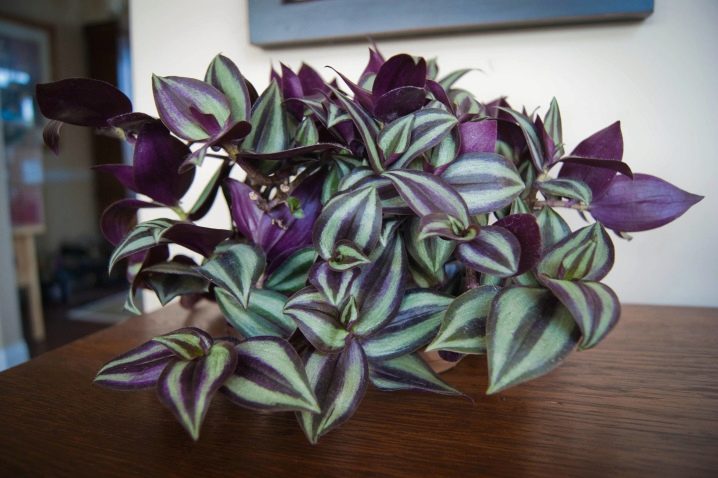
Zebrin looks very attractive if grown in hanging pots. The mix is especially interesting when several plants are placed in one basket at once, which hang down with their shoots of cream and purple flowers.
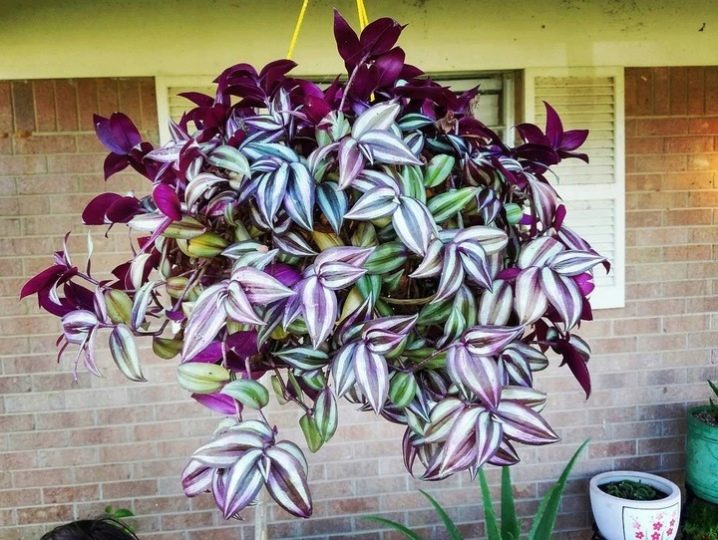































The comment was sent successfully.